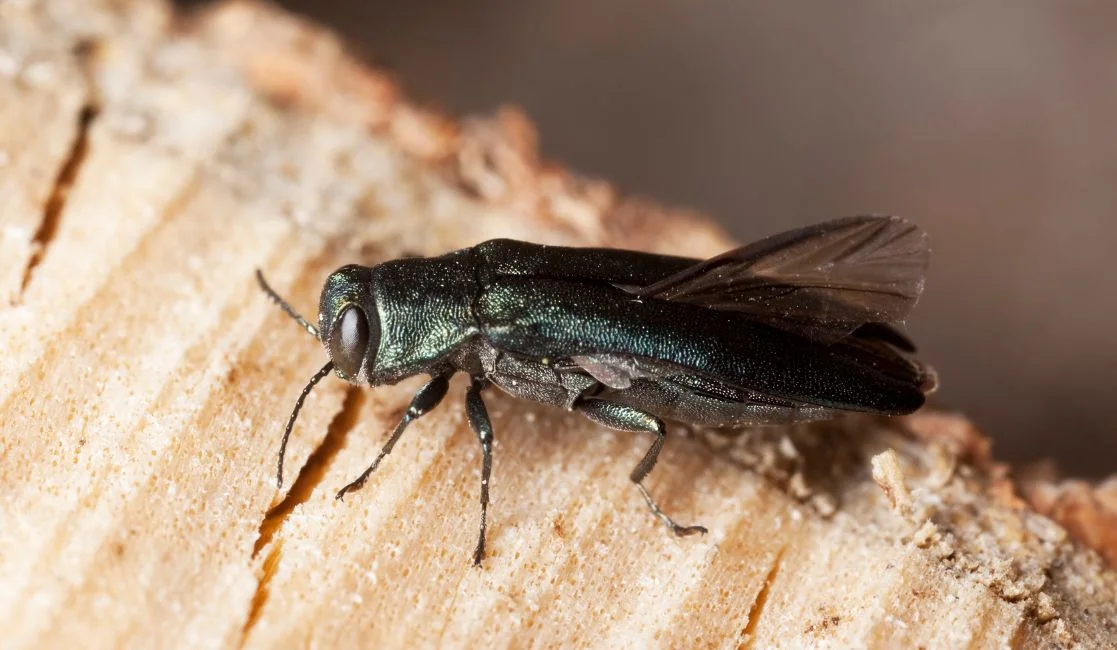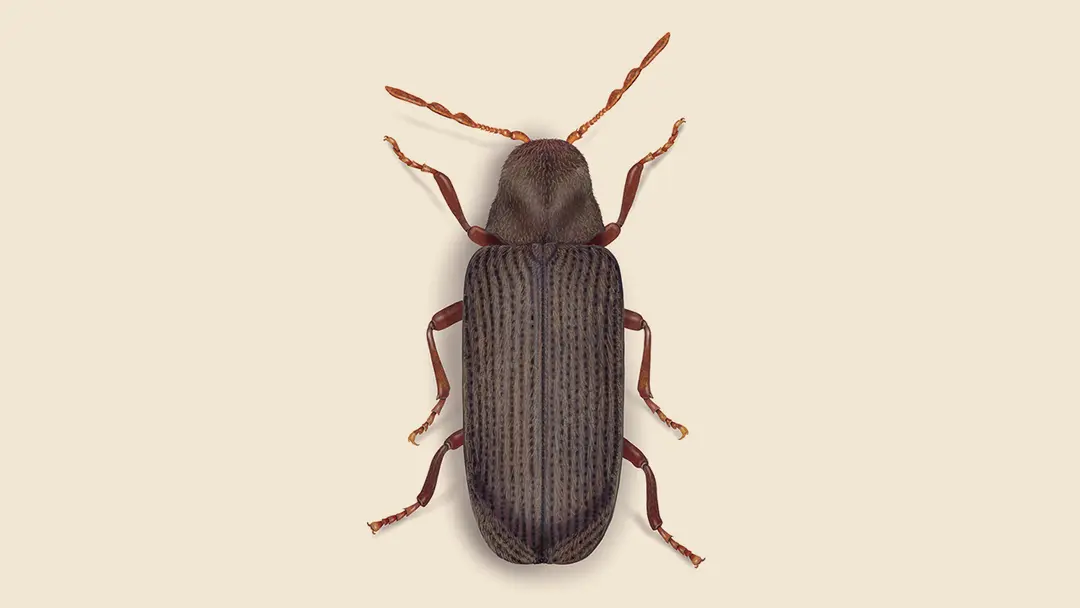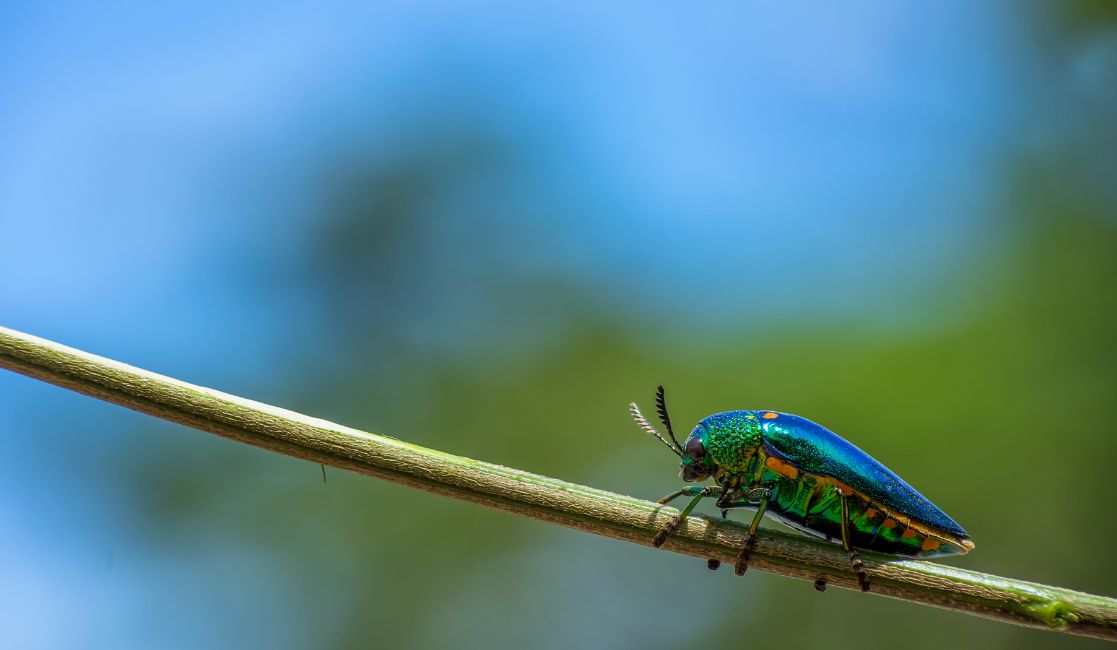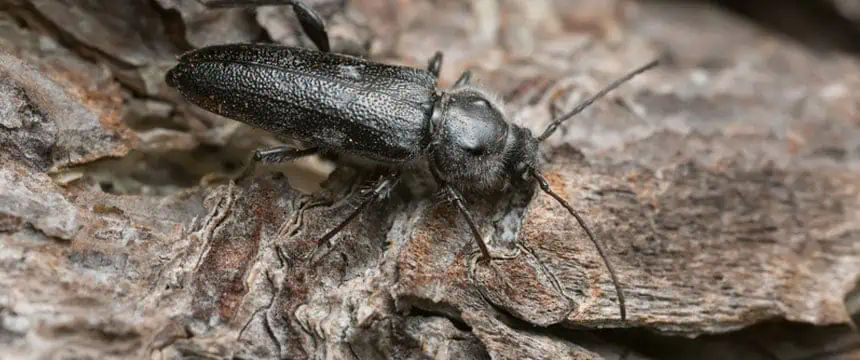Wood Damaging Insects and Preventing Infestation
Wood damaging insects in Canada
Emerald Ash Borer (Agrilus planipennis): This invasive beetle has caused significant damage to ash trees in various parts of Canada, including Ontario, Quebec, and parts of the Maritimes. The larvae of the emerald ash borer feed on the inner bark of ash trees, disrupting the tree's ability to transport water and nutrients.
Asian Longhorned Beetle (Anoplophora glabripennis): Though not as widespread as the emerald ash borer, this invasive beetle can still be a threat. It attacks a variety of hardwood trees, including maple, birch, and poplar, by boring into the wood and causing structural damage.
Mountain Pine Beetle (Dendroctonus ponderosae): Found mainly in western Canada, this beetle infests and kills pine trees. It has been a significant concern in British Columbia and Alberta, affecting large areas of pine forests.
Bronze Birch Borer (Agrilus anxius): This beetle primarily targets birch trees, causing damage by feeding on the inner bark. It is present in various parts of Canada, including the prairie provinces and parts of British Columbia.
Spruce Budworm (Choristoneura spp.): Spruce budworms are caterpillars that infest spruce and fir trees, feeding on new buds and needles. They can cause defoliation and weaken the trees over time.
Pine Sawfly (Neodiprion spp.): Pine sawflies are not true flies but are wasp-like insects that feed on the needles of pine trees. While they typically don't cause severe damage, large outbreaks can lead to defoliation.
Carpenter Ants (Camponotini tribe): While not insects that consume wood, carpenter ants can still cause damage by excavating galleries within wood to create nests. They often prefer moist or decayed wood.

Wood boring-weevils and preventing their infestation
Powderpost Beetles (Family Bostrichidae): Powderpost beetles are a group of small, wood-boring beetles that belong to the family Bostrichidae. The larvae of powderpost beetles feed on wood, creating fine, powdery frass as they tunnel through the material. They can infest hardwoods and softwoods, and their presence is often identified by small exit holes in the wood surface.
Old House Borer (Hylotrupes bajulus): This species of longhorn beetle belongs to the Cerambycidae family and is known for infesting softwoods, particularly conifers like pine and spruce. The larvae tunnel into the wood, creating large galleries. Infestations are often characterized by oval-shaped exit holes.
Ambrosia Beetles (Subfamily Scolytinae): While not true weevils, ambrosia beetles are a group of small bark beetles that bore into wood, creating tunnels where they cultivate fungi for food. They are often attracted to stressed or dying trees. The presence of these beetles can lead to discoloration and staining of the wood.

Identifying the Furniture Beetle insect
Identification:
- Adult beetles are small, ranging from 2 to 5 mm in length.
- The adult beetles are typically brown or black and have a cylindrical shape.
- Larvae are creamy white and have a C-shaped appearance.
Lifecycle:
- Female beetles lay eggs in cracks, crevices, or on the surface of untreated or damp wood.
- Upon hatching, larvae burrow into the wood and feed on the wood fibers.
- As the larvae feed, they create tunnels or galleries within the wood.
- The larvae pupate within the wood before emerging as adult beetles, leaving characteristic exit holes.
Damage:
- The larvae cause damage by tunneling through the wood, weakening its structure.
- Infestations can lead to the formation of small, round exit holes on the surface of the wood.
- Wood dust or frass, a mixture of feces and wood particles, may be visible around the exit holes.
Prevention and Control:
- Preventing excess moisture in wood is crucial, as the larvae thrive in damp conditions.
- Applying wood preservatives or treatments can help protect against infestations.
- Infested wooden items can be treated with appropriate insecticides.

Damage caused by bamboo boring insects
Bamboo Aphids (Pseudoregma spp.): Aphids are small, sap-sucking insects that can infest bamboo leaves, causing them to curl and distort. Aphid infestations can lead to the presence of honeydew, a sticky substance excreted by the insects, and can attract the growth of sooty mold.
Bamboo Mites (Acari): Mites are tiny arachnids that can feed on bamboo leaves, causing stippling, discoloration, and distortion. Bamboo mite damage may result in reduced photosynthesis and overall plant vigor.
Bamboo Borers (Various Beetle Species): Some beetle larvae may bore into bamboo culms (stems). The larvae create tunnels as they feed, potentially weakening the structural integrity of the bamboo. The specific species of borers can vary.
Bamboo Scale Insects (Various Scale Species): Scale insects are small, immobile pests that can attach themselves to bamboo stems and leaves. They feed on plant sap, and heavy infestations may lead to reduced plant vigor.
Bamboo Caterpillars (Various Lepidopteran Larvae): Caterpillars of various moths and butterflies can feed on bamboo leaves, causing defoliation. Some caterpillars may also bore into bamboo stems.
Regular Inspection: Regularly inspect your bamboo plants for signs of insect damage, such as holes in stems, curled leaves, or discoloration.
Pruning: Prune and remove infested or damaged bamboo culms to reduce the spread of pests.
Beneficial Insects: Encourage natural predators of bamboo pests, such as ladybugs and parasitic wasps, to help control populations.
Insecticidal Soap or Neem Oil: Use insecticidal soaps or neem oil as organic alternatives to control certain pests. Be sure to follow product instructions.
Cultural Practices: Maintain proper cultural practices, including providing adequate watering, ensuring good drainage, and avoiding over-fertilization, to keep bamboo plants healthy and less susceptible to pests.
Diseases spread by wood-boring insects
Fungal Infections:
Emerald Ash Borer (Agrilus planipennis): The emerald ash borer infests ash trees, and while the insect itself doesn't introduce a pathogen, the damage it causes by tunneling disrupts the tree's vascular system. This damage can make the ash tree more susceptible to opportunistic fungi that take advantage of the weakened state.
Mountain Pine Beetle (Dendroctonus ponderosae): Infestations by mountain pine beetles in pine trees can lead to the development of blue stain fungi (e.g., Grosmannia clavigera). The beetles carry these fungi, and as they bore into the tree, the fungi can spread, affecting the tree's ability to transport water and nutrients.
Weakened Immune System:
- Asian Longhorned Beetle (Anoplophora glabripennis): The Asian longhorned beetle attacks a variety of hardwood trees. The feeding activities of the larvae can weaken the tree's immune system, making it more susceptible to other pathogens that may be present in the environment.
Stress and Decay:
- Carpenter Ants: While carpenter ants do not introduce diseases, they can contribute to the decay of wood. These ants excavate galleries in wood to create nests. Their presence indicates that the wood is already compromised, possibly by moisture or other issues, and this can lead to decay and structural problems in trees or wooden structures.
Secondary Pathogens:
- Bronze Birch Borer (Agrilus anxius): Bronze birch borer larvae bore into the wood of birch trees, weakening the tree. The stressed and weakened birch trees become more susceptible to other pathogens, such as various fungi that can further harm the tree.







